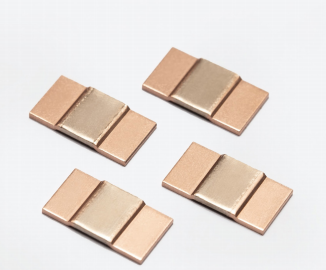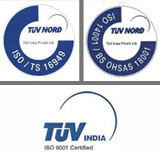- Overview
- Certifications
- R & D Innovations
- Investor Relations
-
Disclosure under Regulation 46 of SEBI LODR
- Code of Conduct
- Board of Directors
- Financials
- Unclaimed / Unpaid Dividend
- Shareholding Pattern
- Annual Reports
- Corporate Governance
- Business Responsibility and Sustainability Report.
- Compliance Officer
- Registrar & Share Transfer Agents
- Share Prices
- Investor Queries/Complaints
- News
- Shivalik Corporate Policies
- Transfer of Shares to IEPF Account
- Investor Education and Protection Fund
- Related Party Transactions
- Forms
For enquiries please click here

Technology
Electron Beam WeldingIn electron beam welding, a cloud of electrons emitted from a tungsten cathode are accelerated in high vacuum (at up to two-thirds of the speed of light) and focused on the target for joining strips.
The electrons convert their high kinetic energy into heat.
The electron beam can be focused to a diameter of 0.1mm producing extremely high energy density at a very small point thus making it possible to weld materials without affecting the metallic or metallurgical properties of the individual alloys being welded.
The Continuous Hot Atomic Bonding ProcessShivalik uses cladding technology called "continuous hot bonding" which relies on more heat and less pressure than conventional methods.
Up to the point where the joining of metals takes place, the materials pass through a reducing atmosphere which removes oxides and other microscopic contaminants.
At the mating point, the materials are reduced in thickness under pressure at high temperatures. No subsequent sintering operations are required to improve bond strength. A strong bond is created by the sharing of electrons of the surface atoms of the component strips. In fact, the as-bonded material in many cases achieves a bond shear strength equal to that of its individual components.The continuous hot bonding process used by Shivalik also results in long coils of material without welds and with excellent bond integrity. Prior to final processing, the coils weigh up to 60 kg per centimetre of width.
As for bond integrity, microscopic examination of materials clad by this process reveals a superior bond interface with no interfacial oxides or impurities evident. This is a quality often highly valued by users of thermostat metals.
Copyright © 2019 Shivalik Bimetal Controls Ltd
-
Disclosure under Regulation 46 of SEBI LODR











